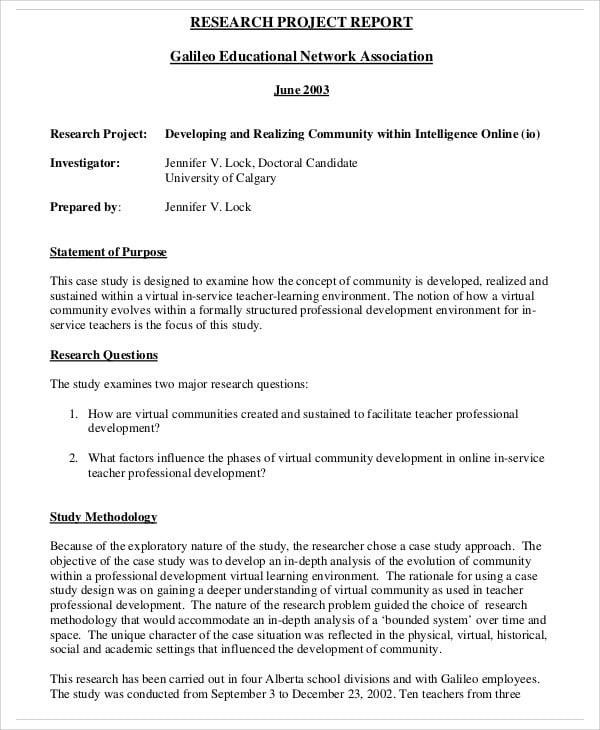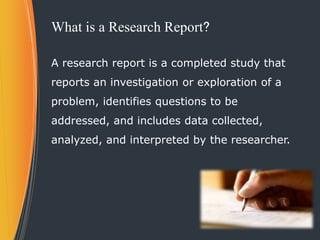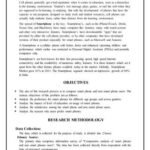research report examples for students

In the vast landscape of academia, research reports stand as vital beacons of knowledge, guiding both seasoned scholars and eager students through the uncharted waters of inquiry. For students, the art of crafting a research report can often feel like a daunting endeavor, shrouded in uncertainty and complexity. Yet, like any skill, mastering this form of academic expression requires not only understanding but also inspiration. In this article, we will explore a variety of research report examples tailored specifically for students, illuminating the path to successful report writing. Each example will serve as a building block, offering insights into structure, style, and substance, empowering young scholars to articulate their findings with clarity and confidence. Join us as we delve into these invaluable resources and unlock the potential of effective research reporting.
Exploring Diverse Research Report Formats for Academic Success
When it comes to structuring a research report, students have a plethora of formats to choose from. Each format serves a different purpose and audience, allowing students to showcase their work in a manner best suited for their field of study. Traditional formats such as APA or MLA are commonly utilized in the humanities, providing a standardized structure that promotes clarity. Meanwhile, scientific reports may employ the IMRaD (Introduction, Methods, Results, and Discussion) format, which is particularly effective in the sciences, facilitating a logical progression of research findings.
Students might also explore alternative report styles that cater to diverse disciplines. For instance, case studies provide an in-depth analysis of a specific phenomenon, while poster presentations are great for visual learners who prefer to summarize their findings in a compact and engaging way. Additionally, infographics have emerged as a creative means to convey research, allowing students to merge visual elements with critical data. Below is a simple comparison table of various research report formats:
| Format | Best For | Key Features |
|---|---|---|
| APA | Social Sciences | In-text citations, References |
| MLA | Humanities | Works Cited, Page formatting |
| IMRaD | Sciences | Logical structure, Clear headings |
| Case Study | Business, Health | In-depth analysis, Real-world cases |
| Poster Presentation | Conferences | Visual data, Summarized content |

Key Elements of Effective Research Reports to Enhance Clarity
Effective research reports share common characteristics that not only enhance readability but also ensure the communication of findings is clear and impactful. A well-structured report typically includes an executive summary that succinctly outlines the purpose, methodology, key findings, and conclusions. It’s essential to incorporate visual elements like charts and graphs, making complex data accessible. By utilizing headings and subheadings, you create a logical flow, allowing readers to navigate the content effortlessly. Additionally, consider including a clear methodology section that details the research process, providing transparency and credibility.
Another crucial component is a well-defined conclusion and recommendations section, which synthesizes the findings and suggests actionable steps. This section should directly address the research questions posed at the beginning. To enhance engagement, the report can utilize bullet points for listing important details, ensuring that readers can quickly absorb key information. referencing using a consistent citation style builds trust and allows readers to explore the source material further, which is invaluable for academic integrity.

Practical Tips for Analyzing and Presenting Data in Reports
html
When analyzing data for a report, it's essential to adopt a structured approach that highlights the most relevant findings. Start by clearly defining your objectives and the questions you aim to answer. This focus ensures that your analysis stays on track. Utilize a variety of analytical techniques such as statistical tests, trend analysis, and comparative studies to delve into your data, enabling you to draw meaningful conclusions. Always ensure that the data sources you rely on are credible and relevant to enhance the reliability of your findings.
Presenting your data effectively is just as crucial as the analysis itself. Visual aids like charts, graphs, and infographics can transform complex information into easily digestible formats. Ensure your visuals are clear and labeled appropriately for your audience. Consider utilizing tables to summarize significant data points, making comparisons straightforward. For instance, the following table showcases a hypothetical comparison of survey results:
Survey Question
Yes (%)
No (%)
Are you satisfied with the product?
85
15
Would you recommend it to others?
90
10

Common Pitfalls to Avoid in Student Research Reporting
In the journey of crafting a research report, students often encounter several obstacles that can compromise the integrity and clarity of their findings. One significant pitfall is the failure to maintain a clear and organized structure. When reports lack a coherent flow, it can lead to confusion among readers. To prevent this, it’s essential to adhere to a well-defined outline with distinct sections such as introduction, methodology, results, and discussion. Additionally, avoiding overly complex language will ensure your message is both accessible and impactful. Here are some key organizational strategies to consider:
- Use headings and subheadings to break down sections clearly.
- Incorporate bullet points for lists or important points to enhance readability.
- Maintain logical transitions between sections for smoother understanding.
Another common mistake is neglecting proper citation and referencing, which can not only undermine your credibility but also result in unintentional plagiarism. Students often overlook this important aspect when gathering information from various sources. To safeguard your work, always ensure that you consistently follow a specific citation style, such as APA or MLA, throughout your report. Consider using the following table to keep track of your references:
| Source | Type of Citation | Status |
|---|---|---|
| Smith, J. (2022). Research Practices | APA | Checked |
| Brown, A. (2021). Understanding Data Analysis | MLA | Pending |
| Jones, R. (2020). Historical Context in Research | Chicago | Finalized |
To Conclude
exploring various research report examples for students illuminates the essential structure and elements that contribute to a compelling and effective reporting of research findings. Whether you’re embarking on your first project or honing your skills for advanced studies, understanding these examples offers valuable insights into the intricacies of research documentation. Remember, a well-crafted research report not only communicates your findings but also reflects your dedication to clarity and accuracy. As you embark on your writing journey, let these examples serve as a guide, inspiring you to convey your ideas thoughtfully and systematically. The road to becoming a proficient researcher is paved with practice, so take the knowledge gleaned from this article and apply it as you craft your own impactful research reports. Happy writing!




